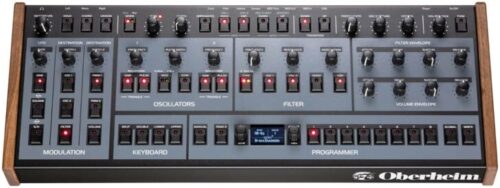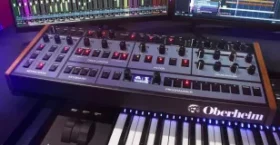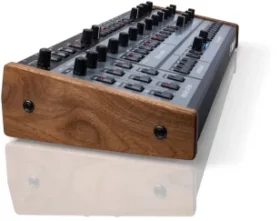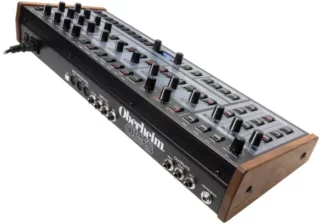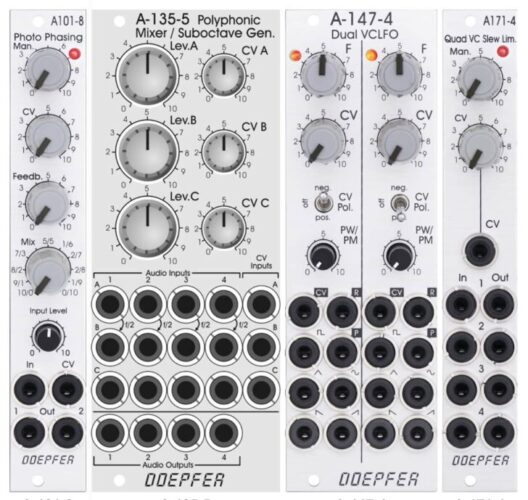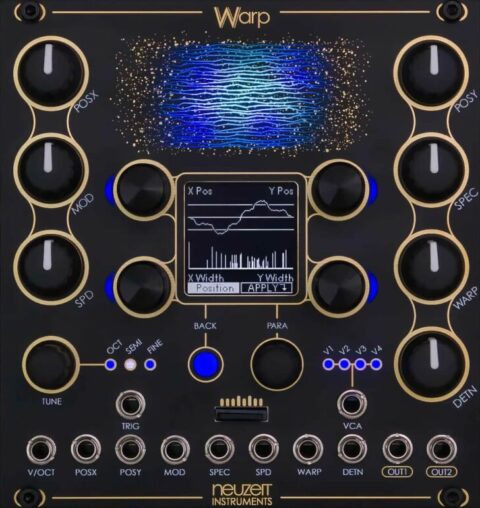Oberheim OB-X8 Desktop Module Coming at Superbooth 2023
At Superbooth 2023, being held in Berlin May 11-13, Oberheim is introducing the OB-X8 Desktop synthesizer.
The Oberheim OB-X8 keyboard, introduced at last year’s Superbooth, combines the three different voice architectures of the classic OB-X, OB-Xa, and OB-8 synths into a single instrument. The individual filter types and other unique characteristics of each model have been faithfully reproduced, along with a 100% analog signal path. Since then, it’s earned a reputation as a worthy successor to Oberheim’s classic synths.
The new OB-X8 desktop version has the same features as the keyboard version, without the 61-note Fatar keybed and pitch/mod levers. The OB-X8 desktop module boasts an identical sound engine to the keyboard version, featuring an all-analog signal path with discrete VCOs, VCAs, and filters.
The desktop version also features the same knob-per-function sound design experience, with immediate access to virtually all the synth’s parameters.
OB users know that the myriad of “Page 2″ functions unlocked the hidden power of the original OB-8.
The OB-X8 includes all of the classic Page 2 parameters, along with new ones, giving you direct access to 40+ controls, including additional SEM filter modes, per-voice panning, LFO keyboard tracking, Mod delay time and envelope inversion, independent pulse width control and more.
Features:
- 8-voice analog polyphony
- Two discrete OB-X/SEM-lineage VCOs per voice deliver classic punchy Oberheim tone
- Discrete SEM-lineage VCFs deliver authentic OB-X-style tone and presence
- Genuine Curtis filters add bold OB-Xa/OB-8 character
- Meticulously modeled envelope responses match each OB model: OB-X, Ob-Xa, and OB-8
- Bi-timbral capability allows two presets simultaneously for splits and doubles
- 400-plus factory programs, including the full set of factory sounds for the OB-X, OB-SX, Ob-Xa, and OB-8
- Integral fan-less, heatsink-free power supply
- Walnut end cheeks
- High-resolution OLED display enables patch management and easy access to advanced features
Enhancements:
- Additional SEM filter modes add high-pass, band-pass, and notch functions to the classic OB-X filter
- Vintage knob allows variable amounts of voice-to-voice variability to emulate the behavior of vintage instruments
- Velocity response adds expressiveness to volume and filter
- Channel Aftertouch response adds real-time performance-based modulation
- Enhanced unison allows variable voice stacking from 1-8 voices
- Programmable per-voice pan allows wider stereo presence
- Variable oscillator and noise levels
- Variable triangle wave cross-modulation
- Over 600 user-programmable preset locations
Details on pricing and availability are to be announced. Find out more on the Oberheim website.
